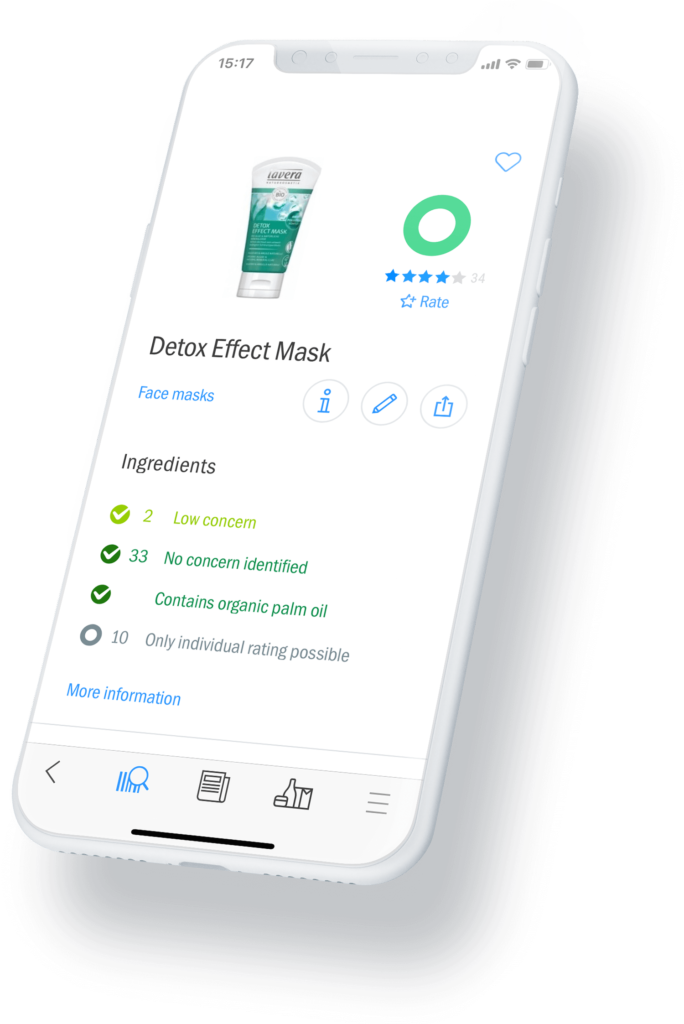Why are you losing traffic to third-party Apps?

Product category
Author
The need for beauty brands to keep up with their consumers is growing increasingly important thanks to the ever-changing tech world. Brands are forced to adapt their business strategies to tech developments and beauty brands are no exception.
Third-party apps such as:

The Think Dirty app allows customers to search for their product by scanning the barcode or simply searching for the name. The result is ingredient information about the product.

A virtual shopping assistant allows consumers to gain full transparency over the ingredients in your food, drinks and cosmetics.
Other apps include Clean Beauty, the only mobile application that allows you to identify controversial ingredients, allergens, and ingredients banned in Europe in ALL beauty and hygiene products, and Yuka which deciphers product labels and analyzes the health impact of food products and cosmetics.
Did you know:
93% of consumers say they are more inclined to buy products marked “clean”, learn more about clean beauty digital solutions here
Consumers are looking to make more conscious purchasing decisions with regard to the composition of a product and how it affects their health, the ethics behind the product and more.
In order To make a confident purchasing decision, consumers are doing their own research before buying and they are finding that the information they’re looking for is not provided by the brands themselves. Hence they’ve turned to these 3rd party apps which provide more transparent information.
69% of consumers feel they have to get their info somewhere else because brands don’t supply enough. Oftentimes, when information is supplied by brands it’s in favour of the brand, no brand is going to admit that their product may increase microplastics, use harmful carcinogens or is not truly cruelty-free. This leads to distrust among consumers, so what can brands do to gain that trust and prevent traffic loss? Let’s dive in!
Consider the foundation of your brand
In order to fix a problem thoroughly, brands have to consider the very foundation of their brand. If the reason you are not being fully transparent with your consumers is that your brand goes against their beliefs, then consider fixing that. For example, clean beauty is on the rise and markets show it will not stop especially with increasing evidence of climate change, what’s the harm in relooking at the sustainability footprint of your products, if it helps the planet and satisfies your consumers, then why not? This can be challenging especially if your brand is highly established, however, we’ve broken down 4 ways to introduce clean beauty into your brand.
The topic of transparency poses a bigger more daunting question against the relevancy of your brand: if you are not being transparent, will your beauty brand stay relevant and survive? According to the needs consumers have about being transparent the answer could be no.
To support this even further, take a look at what your traffic is looking for, according to to answer the public, the most common phrases which appear when “skincare” is searched are as follows (in no particular order)
“which skincare brands are cruelty-free”
“which skincare ingredients not to mix”
“what skincare to avoid during pregnancy”
“what skincare products do I need quiz”
“where to check skincare ingredients”
These phrases are all regarding the compositions of skincare products which means consumers would not be researching it this much if the information was provided by brands in the first place. Center your brand around these topics and give consumers concrete answers for a decrease in traffic loss.
Have credible, legitimate reviews
According to Benchmarking’s data, 86% of consumers say product reviews influence their purchase. Enter, influencers… yes they’re a great marketing tool and can decrease the traffic loss to your site but the problem comes when finding the right influencers who authentically align with your brand. If you’re a cruelty-free brand but align with someone like Jeffrey Star who has many anti- cruelty-free scandals against him, would not be in the best favor of your brand. Although he has a huge following and would no doubt get your brand traffic, are you building an authentic audience using influencers like Jeffrey Star?
Know your audience
This brings us to the next topic which will help you win your traffic back. Build the correct audience and make it meaningful and sincere. Following up on the above example about Jeffrey Starr, you have to consider the audience that the influencer has, what are the chances of Jeffrey Star having a truly cruelty-free audience? very slim, which means the traffic that is driven to your site will not be long-lasting. If you want to build a relationship with an audience that does align with your brand, use influencers who frequently create content about the value that your brand has, that way you know that their audience would more likely keep coming back to your site for products because they trust the influencer they heard it from.
Embrace Beauty Tech
Digitally providing transparency to your consumer is the best way to go. With the help of ingredient lists and explainers, which provide the consumer with information about what is contained in the product they purchase.
Skincare finders are with your consumer every step of the way as they discover, via online consultation, which are the best products for their skin from your brand.
Automated Clean beauty icons which appear below the product to verify the clean beauty status of the product. The icons are adapted to your brand’s value, whether it be ocean-friendly, vegan-friendly etc, the icons provide your consumers with the sustainability information that is growing increasingly important to know.
With Beauty tech, you, therefore, provide even more legitimate information to your consumers because most of these apps allow consumers to add product data, which is faulty and lead to misinformation. Secondly providing the information yourself helps educate your consumers about the ingredients you use and any negativity around certain ingredients that start because of misinformation which 3rd party apps may cause, for example, SLS is irritating at 100 per cent but not irritating at lower concentrations. Third, you get to also educate consumers about using the correct terms, consumers often misunderstand Vegan as natural and this leads to misunderstanding of your product!
By delivering the transparency from your own shop, you could keep this traffic and convert it right there and then! Traffic loss happens to the best brands but it can be solved by always researching your consumer trends to reduce traffic loss.


